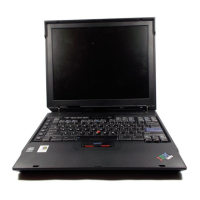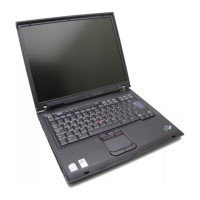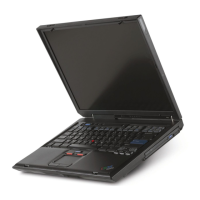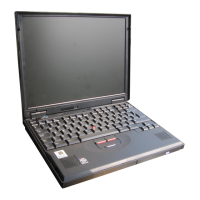Advanced Information for PC Cards
Registered Drivers and Standard Rules for DOS and Windows
DOS
WIN
The following is a sample of the CONFIG.SYS file for DOS and Windows:
:
DEVICE=C:\DOS\EMM386.EXE FRAME=D X=C8 -CFFF
:
DEVICEHIGH=C:\THINKPAD\IBMDSS14.SYS Socket Services
(CardBus controller)
DEVICEHIGH=C:\THINKPAD\IBMDSS 4.SYS Socket Services
(R2 PCIC controller)
DEVICEHIGH=C:\THINKPAD\IBMDOSCS.SYS Card Services
DEVICEHIGH=C:\THINKPAD\IBMDSCSE.SYS
Enhanced Card Services
DEVICEHIGH=C:\THINKPAD\DICRMU 1.SYS /MA=C8 -CFFF
Resource Map Utility
DEVICEHIGH=C:\THINKPAD\$ICPMDOS.SYS
Power Management Support driver
:
REM PC_Card_Client_Device_Driver
:
DEVICEHIGH=C:\THINKPAD\xxxxxxx.SYS
Storage card device driver
DEVICEHIGH=C:\THINKPAD\AUTODRV.SYS Auto Configurator
:
Rule 1 When using the PCMCIA drivers with the Software EMS driver
(EMM386.EXE), you must specify the X= parameter for
EMM386.EXE. This is to avoid conflict in the memory area
used by the PCMCIA drivers and the Software EMS driver.
Rule 2 Socket Services, Card Services, and Resource Map Utility must
be listed in this order.
Rule 3 The Power Management Support driver must be listed after the
Resource Map Utility.
Rule 4 The PC Card Client device driver must be listed before the Auto
Configurator.
Rule 5 When using storage cards, you must install the device driver
according to the card type, as listed below.
Using only an ATA card:
DEVICEHIGH=C:\THINKPAD\PAWATA.SYS
Using an ATA card and an SRAM card:
DEVICEHIGH=C:\THINKPAD\PAWATAS.SYS
Appendix B. Advanced Information for PC Cards 281

